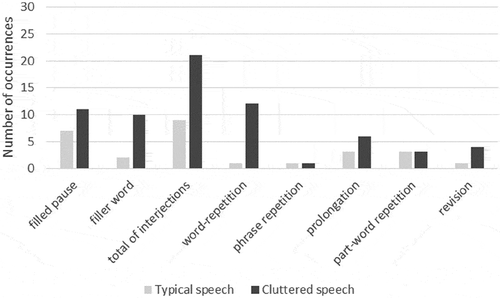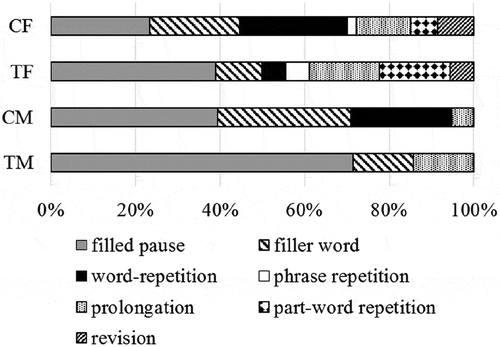Figures & data
Table 1. Speech rate and articulation rate of the subjects (mean and range) (in syllables per second).
Table 2. Types of disfluencies based on Roberts et al. (Citation2009) and Tetnowski and Scott (Citation2010).
Table 3. Frequency of occurrence of disfluency clusters and complex disfluencies in 300 syllables in the speech of typical, PWC and ERS speakers.
Table 4. Examples of complex disfluencies (FIL = filled pause; SIL = silent pause) (disfluencies are highlighted in bold).
Figure 1. Number of occurrences of types of disfluencies in the complex disfluencies which suggest difficulties of message generation.

Figure 2. Number of occurrences of types of disfluencies in the complex disfluencies which suggest difficulties in linguistic formulation.

Figure 3. Ratio of types of disfluencies in the complex disfluencies of different functions (T = Typical speakers, C = PWC; M = Difficulties in message generation, F = Difficulties in language formulation).

